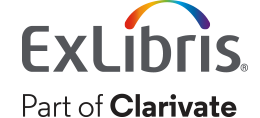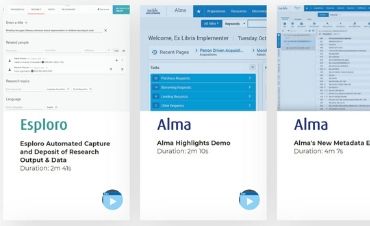All over the world, universities are struggling with the effects of the COVID-19 coronavirus on their activity, primarily on teaching and learning. In some regions, online learning is the only option for millions of students at this time. While online courseware is probably the prime focus for enabling students to continue with their studies, libraries, too, need to support a massive transition to online learning.
Libraries have long offered remote access to content, but supporting remote learning at scale presents bigger challenges. Here are six essential aspects of delivering course resources that libraries should look at:
1. Enabling online access to academic course resources
Students need to be able to access course materials from anywhere, on any device, with minimum hassle. Embedding access to library course resource lists directly into learning management systems (LMS) makes it easy for students to find resources and access them, without presenting new processes.
Action plan to consider:
- Approach your learning management system technical services team to discuss means for integrating library resources into the LMS.
See how University of Windsor library is reducing the barriers for students and instructors.

A good remote learning program starts with designing courses in a way that fits with online learning purposes. ![]()
2. Identifying electronic versions of books and book chapters
Libraries invest significant part of their budget on subscribing to electronic collections for the use of faculty and students. But are these e-resources used optimally in course resource lists? Evidence from various schools suggest that library-subscribed resources are underused in course curriculums. The current situation presents an opportunity for librarians to replace books and book chapters in course resource lists with electronic versions.
Action plan to consider:
- Collaborate with instructional designers and help them identify electronic versions of materials
- Use library and reading list systems to automatically analyze course resources and flag physical resources that are also available electronically
3. Facilitating access to physical books
Statistics from the Ex Libris Leganto customers show that books constitute nearly 40% of course resource lists. While libraries gradually shift their focus to electronic collections, having physical books on your library stacks doesn’t mean that students can’t access them remotely. Digitizing book chapters or a subset of pages and linking to them from the course resource list gives students the opportunity to access content at their convenience.
Action plan to consider:
- Establish a workflow for identifying which books are required as course resources so that your library can digitize the relevant pages in a timely manner
- Adopt processes and tools to automatically identify cases where scans are not considered ‘fair use’ and easily clear copyrights, so that you can scale up to support more courses
4. Making online course resources affordable
A successful online learning program should also make it easy and affordable for students to access materials. Coursepacks often constitute a significant cost for students. Furthermore, the current situation might pose a challenge for students to obtain physical coursepacks. Replacing course packs with materials available through the library at no fee for the students, open access resources, and book scans can help both save costs and enable online access to materials.
For example, at Concordia University, a faculty member was teaching a course that used a single textbook that cost $82. He discovered that only about 1/3 of student would purchase the book. Working closely with the library he identified materials available through the library collection and was able to reduce materials cost for this course to $0.
Libraries can also facilitate pay-per-use models by integrating with copyright agencies, thus allowing students to pay only for the materials they need.
Action plan to consider:
- Leverage tools that will help librarians, instructional designers, and professors creating resource lists to automatically identify library-subscribed materials
- Maximize the use of open access resources, including Open Educational Resources (OER)
- Investigate the plans offered by your national copyright clearance service
See how University of Denver library are reducing costs for students.
5. Promoting library services to faculty and students
Libraries can invest in the most innovative, user-friendly services, but without marketing them to students, these services will remain unused.
Action plan to consider:
- Promote library remote services ahead of time, so that students are aware and know how to find them when needed
- Ensure that librarians are available to communicate with students online and support them
- Leverage campus engagement services and best practices to accelerate adoption of library services
6. Becoming part of the curriculum development
A good remote learning program starts with designing courses in a way that fits with online learning purposes. When librarians are involved with curriculum development from the start, they can make sure that instructional designers and faculty are leveraging all types of library resources (hint: not only books). Working together also gives the library important insights for optimizing its collection development plans, in line with the needs of distant learning programs.
Action plan to consider:
- Develop a long-term strategy to partner with instructional designers and faculty in order to identify course resource needs in advance and to provide advice on alternative library-owned resources.
See how the University of St. Thomas library is successfully partnering with instructional designers to leverage library resources.
Students will eventually storm back to campuses and library buildings, hopefully sooner rather than later. However, online learning will remain an important part of the educational strategies mix. By putting the right processes and supporting tools in place, libraries have an opportunity to use their core competencies to support transformation and showcase their value.
If you would like to learn more about how course resource list management systems can support your library goals, please talk to us.
March 12, 2020






